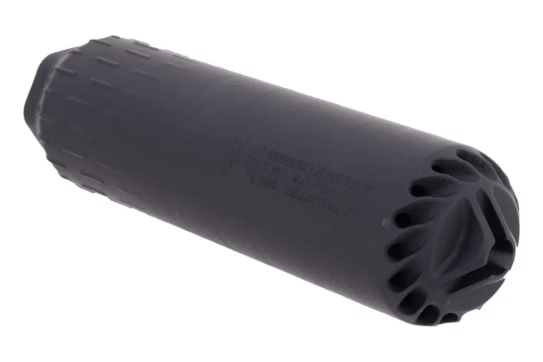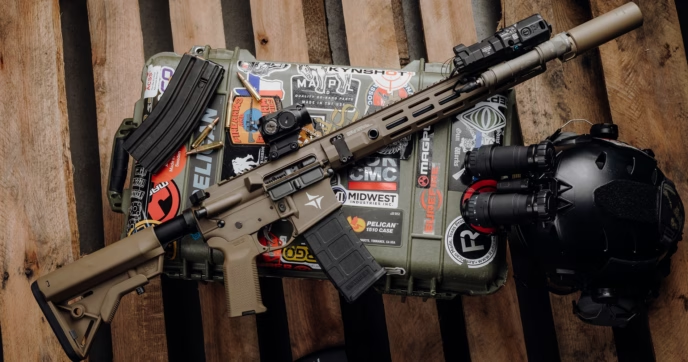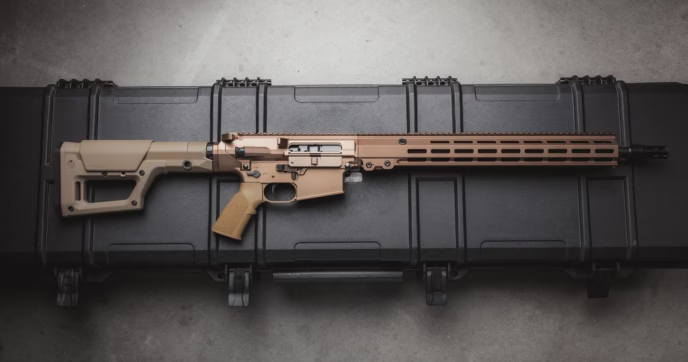In our previous article on AR-10 Muzzle Devices, we briefly mentioned the different suppressor options available for .308 caliber rifles. While we recommend checking out that article if you’re interested in building or buying an AR-10, there’s much more to be said when shopping for a dedicated .308 suppressor.
On their own, suppressors are easily some of the most popular and sought after accessories for rifles, after optics. But unlike other accessories, they have a more involved purchasing process since they’re an NFA item. As such, it’s imperative to make sure the suppressor you opt for not only gets you the best sound suppression possible but also aligns with your own needs and rifle build.
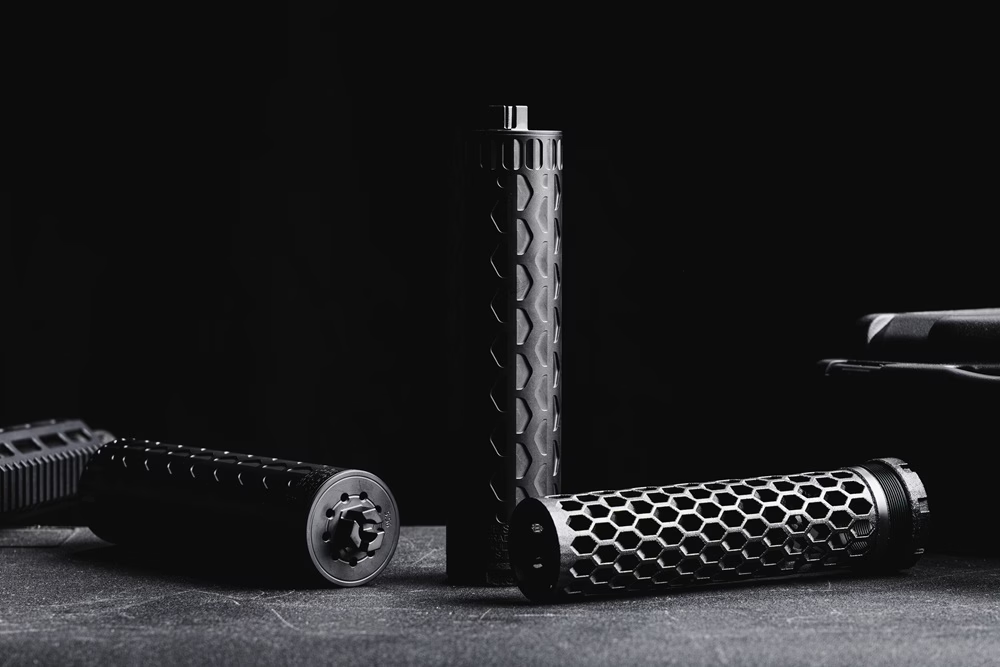
Understanding .308 Suppressors
For the uninitiated, suppressors are a muzzle accessory designed to reduce the sound signature of a rifle by capturing the gases in a series of baffles. By doing so, the gas’s expansion rate is slowed down, giving it time to cool, dampening the sound of the powder ignition while also muting most, if not all, of the muzzle flash. .308 Winchester is a full-power rifle round that creates a sizeable muzzle flash and sound signature, making suppressors an especially advantageous accessory for most rifle builds.
Why not use a Multi-Caliber Suppressor?
Suppressors can vary in size, ranging from options as small as .22-inch diameter bores for cartridges like 5.56 to .46-inch diameter bores that can suppress much larger cartridges like .458 SOCOM. As such, a dedicated .30 Cal suppressor is the best choice for .308, since they’re designed for .30 caliber cartridges like .308 and commonly use a roughly .35-inch diameter bore.
Still, many often spring for a multi-caliber suppressor for their first one, with 9mm suppressors being a popular option. 9mm suppressors can suppress many calibers and they do a rather good job suppressing .30 Cal cartridges like .300 Blackout and .308. However, this doesn’t mean they’re the best fit for the job.
Multi-cal suppressors have larger bore diameters to accommodate multiple cartridges—so while you can get good sound suppression with one, their larger bore diameters allow more gas to vent out of the suppressor after firing. You can get good results with one, but they won’t be on par with what you can expect with a dedicated .30 Cal suppressor.
Can you shoot 7.62×51 through a .308 Suppressor?
Before moving forward, many new enthusiasts often get confused with the suppressor’s compatibility between .308 and 7.62×51/7.62 NATO. Most, if not all, .30 Cal suppressors are designated as ‘7.62’ instead of .308 or .30 Cal—and just like 5.56 NATO and .223 Remington, .308 Winchester and 7.62 NATO look nearly identical in appearance and are often erroneously assumed to be the same cartridge. They have considerable differences that we highlight in our guide, “7.62x51mm vs. .308”, but since they both use the same diameter bullet, you’ll be able to use a .30 Cal suppressor on rifles of both calibers with no issues.
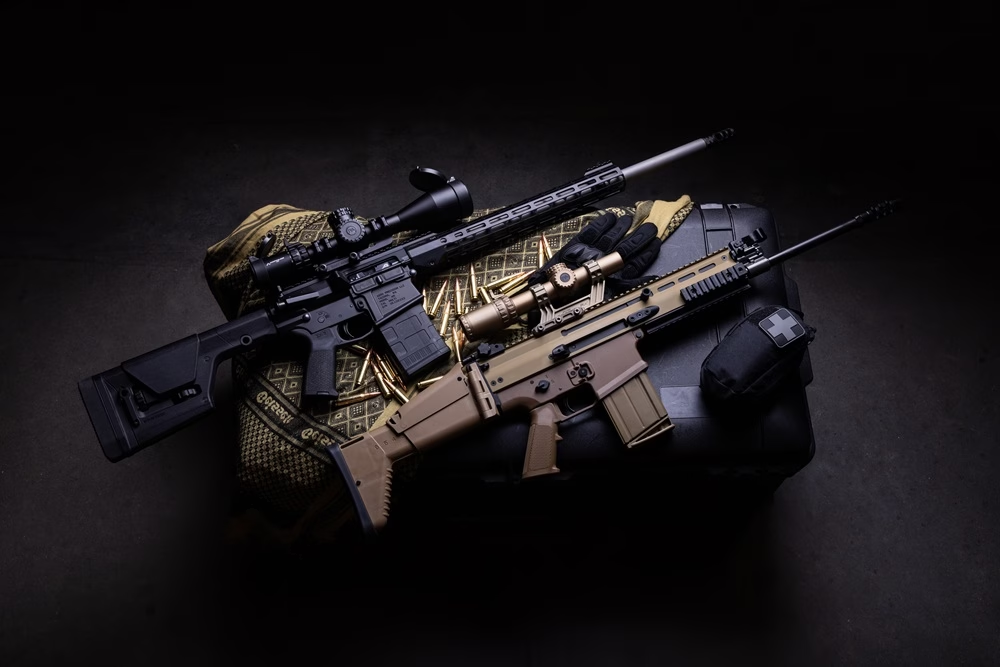
Choosing the Best Suppressor
As we mentioned above, there’s a lot to consider when choosing a suppressor. We go over this topic at length in our guide, “How to Choose the Right Suppressor for Your Rifle”, but choosing one essentially boils down to the type of rifle you have, how you intend to use it, and what your personal preferences are.
Type of Rifle and Purpose
There can be a lot of variances between different suppressor models, with each one having features that make them more suitable for different applications.
Semi-auto platforms like the AR-10, SCAR, and SIG MCX Spear can be configured to fit either a battle rifle or DMR role, and depending on which you choose, you can benefit from using specific suppressors. Battle rifles are designed for adaptability, offering a nice blend of agility and power, making shorter suppressors, or ones made from lighter materials, a more viable option. Meanwhile, for something like a DMR or even a .308 bolt-action rifle, which place more emphasis on stationary shooting, a longer suppressor can be more advantageous since they have more internal baffles, meaning they’ll offer better suppression when using the right ammo.
Mounting Method
Even further, suppressors can mount to your rifle in one of two ways; they can either thread directly onto the barrel, or they can mount to a compatible muzzle device.
Direct-thread suppressors are the simplest mounting method, and pair particularly well with bolt action rifles—they also have less risk of suffering baffle strikes due to tolerance stacking. Still, unlike a QD suppressor, direct thread options don’t lock into place, so they can loosen over time due to the barrel’s harmonics when firing, and if you want to use one suppressor for multiple .308 rifles, the removal and attachment process isn’t as quick.
QD suppressors have quickly become the go-to choice for many. Easily the most convenient possibility, rather than threading onto the barrel, they mount to a specialized muzzle device that allows for easy attachment and removal. One of the only concerns to consider is tolerance stacking. Every threaded part—the barrel and muzzle device—are threaded to a specific tolerance, and if there’s any variance between the two, it can cause your suppressor to become misaligned once mounted. That said, if you opt for high quality components and double-check your alignment with an alignment rod, there’s not much to worry about.
It’s important to recognize that neither option is inherently better than the other, but they do come with their own pros and cons. Fortunately, we go over them at length in our Quick Detach Suppressor Guide.
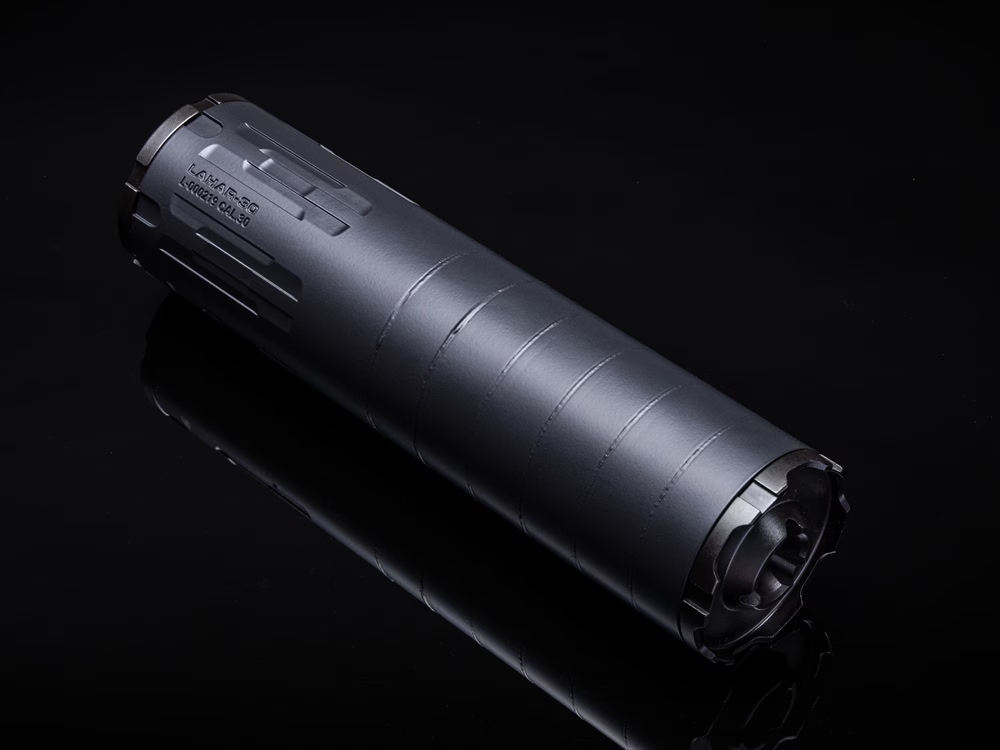
Suppressor Materials
In addition to varying lengths and mounting types, suppressors can be made from a wide variety of materials. For the most part, however, they’re made from either stainless steel or titanium.
For starters, stainless steel suppressors are generally more affordable than titanium ones, offer excellent durability, but are comparatively heavier than titanium options. On average, stainless-steel suppressors can cost anywhere from as low as around $300 to as much as $1,500+ depending on the make on the model.
Titanium suppressors are exceptionally durable as well, and they’re much lighter than stainless steel models. Plus, they’re capable of withstanding higher temperatures during sustained fire. However, titanium suppressors use pricier materials and are harder to manufacture, so they can be quite expensive, with them ranging anywhere from around $800 to $2,000+ in some cases.
Best .308 Suppressors
Even if you know everything there is to know about suppressors, shopping for the best .308 suppressor can still be a daunting task. To be completely honest, it’s impossible to crown one suppressor as the ‘best’ one, as there is a plethora of solid models to pick from. For newcomers, it’s easy to fall victim to analysis paralysis when sifting through all that’s available—so to you help you get started, we’ve compiled a brief list of some top picks to consider:
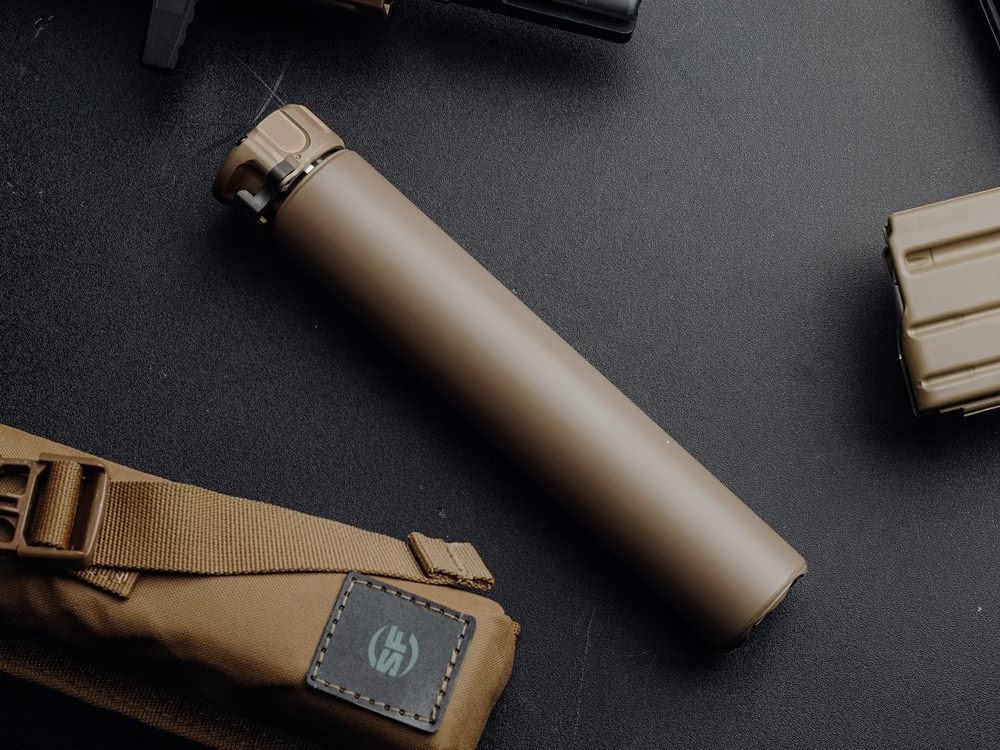
SureFire
Arguably one of the most popular brands, SureFire is one of the industry’s leading manufacturers of weapon lights, ear protection, muzzle devices, and of course, suppressors. Among their lineup, there are several SureFire suppressors to choose from, with their SOCOM762 series suppressors being among the most popular .308 suppressor options.
SOCOM762-RC2
Building on the foundation of the earlier SOCOM762-RC, the RC2 is a stainless-steel suppressor designed to be as durable as possible, while delivering optimal sound suppression through Inconel (a nickel-chromium alloy). In fact, these suppressors have passed USSOCOM’s suppressor trials, making them a battle-tested and proven suppressor ready for use in all conditions. The RC2 is 8.4 inches long and weighs 19.5 ounces. These suppressors do an excellent job at mitigating sound and essentially eliminate first-round flash thanks to their specialized front plate design. Additionally, the RC2 utilizes SureFire’s Fast-Attach design mounting system, making it compatible with all SureFire fast-attach QD muzzle devices.
Being a premium choice, these suppressors typically hover around $1,300, though this can vary depending on the package.
SOCOM762-TI2
A more premium choice, the SOCOM762-TI2 offers the same versatility as the RC2, but in a much lighter package. Constructed from titanium, these suppressors weigh only 11 ounces and are engineered to exceed SOCOM’s suppressed sniper specifications, making them a solid choice for professional applications. Aside from their material construction, there aren’t many differences between the TI2 and RC2. The TI2 is marginally shorter, coming in at 7.9 inches long, but it still offers first-round flash elimination, and uses the same mounting system. It’s a bit pricier than the RC2 as well thanks to its titanium construction, with them typically priced around $1,350 to upwards of $1,500.
SOCOM762-MINI2
Designed for more compact .308 rifles, the SOCOM762-MINI2 is designed for use on rifles with a 16- to 18-inch barrel, making it perfect for rifles like the AR-10 and SCAR-17. The MINI2 shares many of the same features as the RC2, from its stainless-steel construction to its use of the same mounting system. A smaller suppressor, the MINI2 measures 6.2 inches long and weighs 17 ounces. Despite their shorter length, they still do an excellent job at suppressing sound, and like the other SOCOM762 models mentioned thus far, it practically eliminates first-round flash. Lastly, these suppressors are typically priced around $950 to $1,250+.
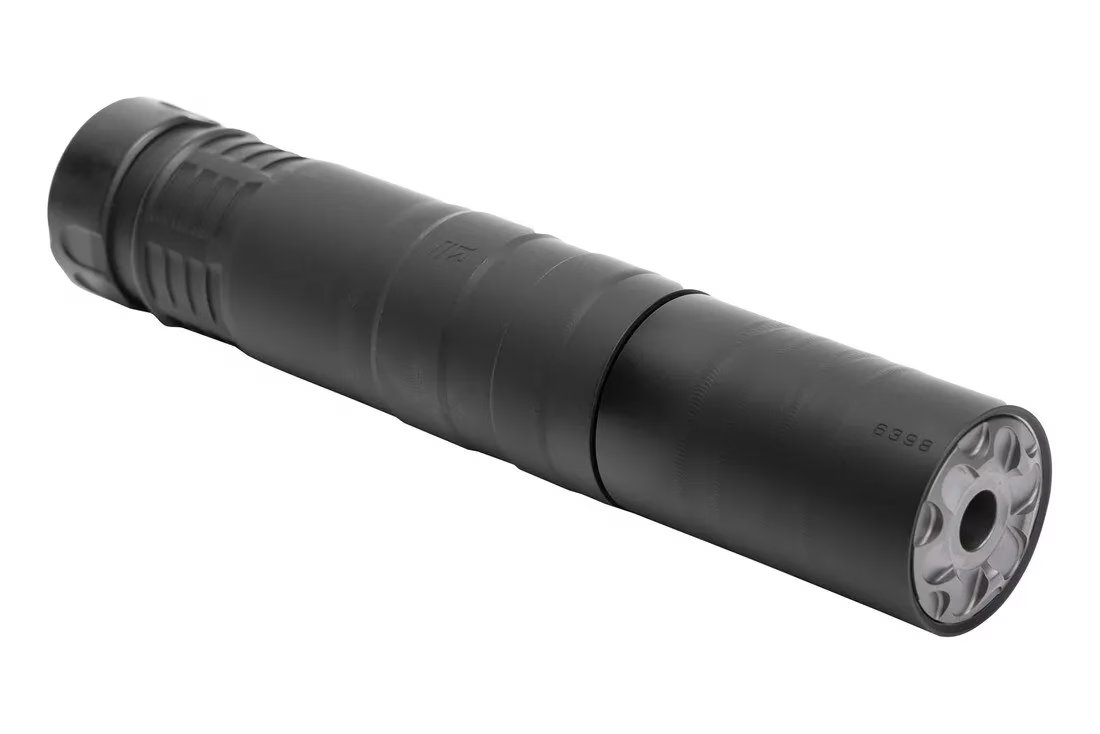
Rugged Suppressors
Based out of South Carolina, Rugged Suppressors has made a name for themselves as another of the industry’s leading suppressor manufacturers. With a wide array of models to their name, they offer several solid 7.62 suppressors, namely, their Radiant and Razor suppressors.
Rugged Radiant 7.62
The Radiant 7.62 is one of Rugged’s most popular models, offering adaptability to suit a multitude of rifle types and setups. Utilizing a titanium body and cobalt baffles, it comes with an extension, giving you the option to run it in either a compact 5.1-inch, or a longer 7.5-inch configuration—giving you the adaptability of two different sized suppressors with only one tax stamp. In its longest configuration, it weighs only 12.5 ounces, and it weighs 9.4 ounces when in its shortest.
Additionally, the Radiant 7.62 is full auto rated, and can effectively suppress up to .300 RUM, making it a solid choice for all .308 builds. Despite being a titanium suppressor, you can commonly find the Rugged Radiant around the $1,050 price point, though this can vary depending on the package.
Rugged Razor 7.62
Another solid pick from Rugged Suppressors is their Razor 7.62. Designed to provide maximum suppression in a compact package, these models are 6.4 inches long and offer excellent performance. Their Razor series suppressors use a 17-4 stainless steel construction and come standard with cobalt baffles for optimal heat dissipation and corrosion/abrasion resistance. Just like the Radiant, Razor suppressors are full auto rated and can suppress up to .300 RUM.
While they don’t have a modular length, they offer solid performance in a relatively compact package, making them ideal for everything from battle rifle setups to DMR and bolt-action builds. Lastly, you can typically find them priced around $700 to $850 depending on the finish.
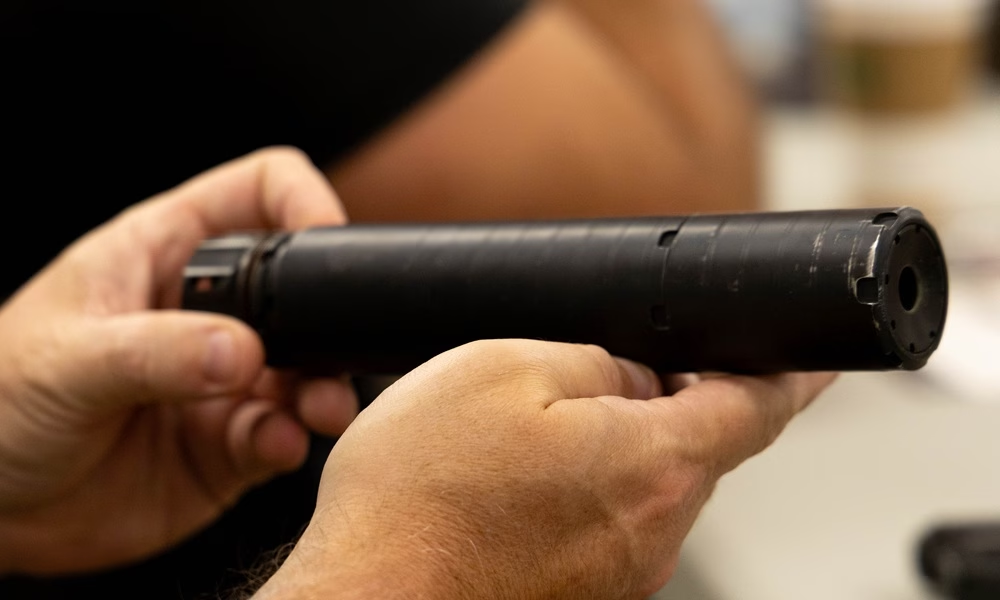
Dead Air
Dead Air is without a doubt one of the most recognizable names in the suppressor industry, popularizing the KeyMo and Xeno suppressor quick detach mounting hubs. Much like the other brands mentioned thus far, they offer a multitude of various suppressor models, with their Nomad series suppressors being an exceptional pairing for .308 Rifles.
Nomad-30 and Nomad-L
The Nomad-30 is Dead Air’s flagship .30 Cal suppressor. Using a modular design, the Nomad-30 uses a hybrid stainless steel and titanium construction, in which the tube is made of stainless steel, while the end cap is made of Grade 5 titanium for optimal corrosion resistance. Weighing 14.5 ounces, the Nomad-30 is lightweight despite its 6.5-inch length. It also has a specialized baffle design to reduce the dreaded first round pop that’s notorious with suppressor use. Overall, it’s a solid general-purpose suppressor fit for all applications.
It’s also available in a longer configuration for better sound suppression, known as the Nomad-L. It’s slightly longer, coming in at 8.4 inches long, and it weighs 18.3 ounces. Lastly, both suppressors typically cost around $800 to $900, respectively.
Nomad-Ti XC and Nomad-LTi XC
For better weight savings, the Nomad TI is a solid suppressor that offers excellent performance in a lighter package. Made from Grade 5 titanium, it weighs either 7.4, 9.6, or 9.7 ounces, and measures around 6.3 to 7.03 inches long, depending on the mount you use. These suppressors are best for stationary shooting disciplines, as they aren’t full auto rated. Still, they offer incredible performance in a lightweight package, and like the other Nomad suppressors, they can be compatible with both Dead Air’s Xeno and KeyMo muzzle devices.
The Nomad-LTi XC is the most premium option in the Nomad lineup. Constructed from 3D-printed Grade-5 titanium, it features a specialized coaxial baffle system that provides optimal performance with both high- and low-pressure rounds. Measuring in at either 8.12 or 8.8 inches long, it’s exceptionally light, weighing only 9.9 or 12.2 ounces, depending on whether you opt for a direct thread or Xeno mount. Designed for precision shooting disciplines, this suppressor was designed for bolt-actions and other precision shooting platforms.
Regardless of which one you opt for, these suppressors generally hover around the $1,100+ price range.
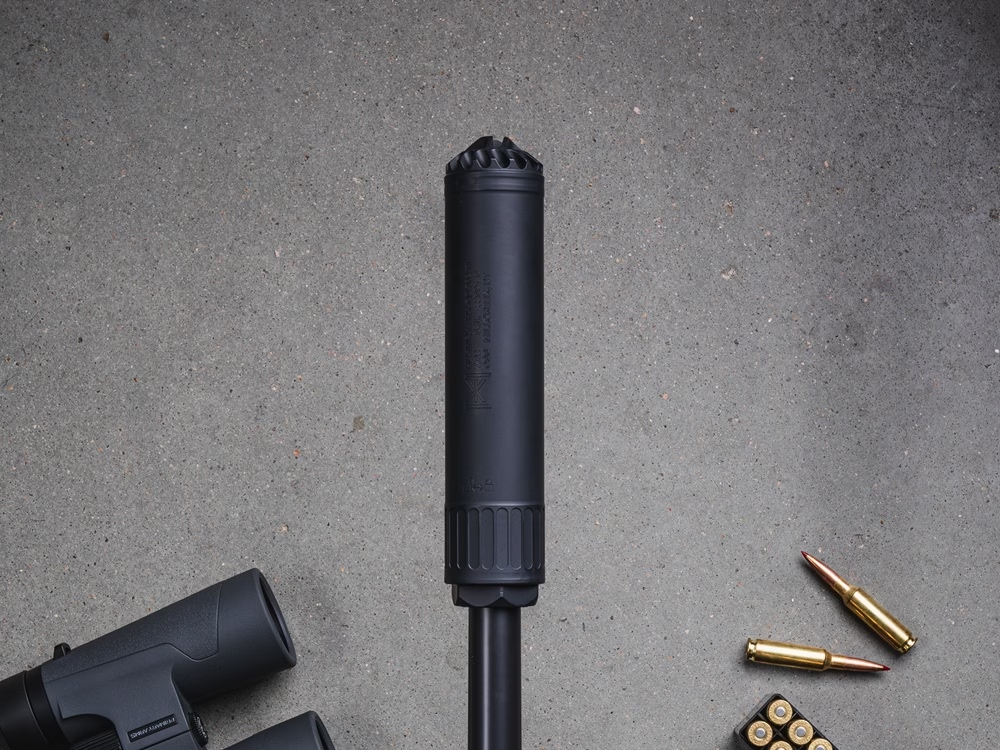
HUXWRX
HUXWRX has quickly become one of the most prominent names in the suppressor industry, known primarily for their innovative designs and use of flow-through technology. As they’ve continued to expand their lineup, their 7.62 suppressors have become incredibly popular.
FLOW 762TI
By far, one of the most popular HUXWRX suppressor options is the FLOW 762TI. The FLOW 762TI is constructed from 3D-printed titanium, making it exceptionally lightweight and durable compared to conventional suppressor models. Furthermore, it has an overall length of 6.77 inches and only weighs 11.8 ounces. As mentioned above, one of the key features that makes this suppressor so unique is its flow-through design.
Conventional baffle designs can significantly increase a rifle’s back pressure, causing the gases to vent back out of the receiver, irritating your eyes and nose, making it hard to comfortably shoot suppressed. While there are specialized tools like adjustable gas blocks and gas-busting charging handles, the FLOW 762TI’s flow-through design allows the gases to be directed out the front of the suppressor after cooling off, greatly reducing back pressure without compromising on sound or muzzle flash suppression.
The FLOW 762TI is one of the more premium .30 Cal suppressors on the market, and they’re typically priced around $1,200 to $1,300. Still, included with them is a HUXWRX QD muzzle device, allowing you to easily and quickly mount it to your rifle.
Conclusion
On the outside looking in, the world of suppressors is about as confusing as it is intriguing. Even if you narrow down your search to just .30 cal options, it can be a challenging endeavor for the uninitiated. However, as daunting as the process may seem, by taking your needs and preferences, as well as your rifle’s application into consideration, finding the best .308 suppressor can be easily done.
If you’re running an AR-10 or SCAR in a battle rifle configuration, a shorter, lighter suppressor is a solid pick that won’t hinder your rifle’s maneuverability. For more stationary shooting, like with DMRs and bolt-actions, you can opt for a longer and slightly heavier suppressor to get the most sound suppression possible.
Ultimately, you can never go wrong with adding a suppressor to your setup, but if you add one without first taking your intended use into consideration, you might not pick the best one for your build. If you’ve taken time to research all your options and have ensured the one you’re looking at is a good fit for you, we highly recommend adding it to your build.
